10 Best Rear Delt Exercises: Impressive Shoulder Development
When it comes to sculpting impressive shoulders, don’t overlook the rear delts. Neglecting them can lead to imbalances and poor posture. Strong rear delts contribute to a 3D shoulder look and prevent injuries. Unlock your shoulder potential with the Best Rear Delt Exercises.
In this comprehensive guide, we’ll explore 10 of the best rear delt exercises that will help you effectively target and build these crucial muscles. From compound movements to targeted isolation exercises, we’ve got you covered. So, let’s dive in and start sculpting those head-turning rear delts!
Understanding the Rear Deltoids
Before we get into the exercises, it’s important to understand the anatomy and function of the rear deltoids. The deltoid muscle is a complex structure composed of three distinct deltoid muscles consisting of three parts: the front (anterior), side (lateral), and back (posterior) heads.
The rear deltoids, found at the back of the shoulders, are crucial for pulling your arms back and creating a 3D shoulder appearance. However, they’re often overlooked in workouts. By focusing on the Best Rear Delt Exercises, you can strengthen these muscles and enhance your shoulder aesthetics and functionality.
10 Best Rear Delt Exercises
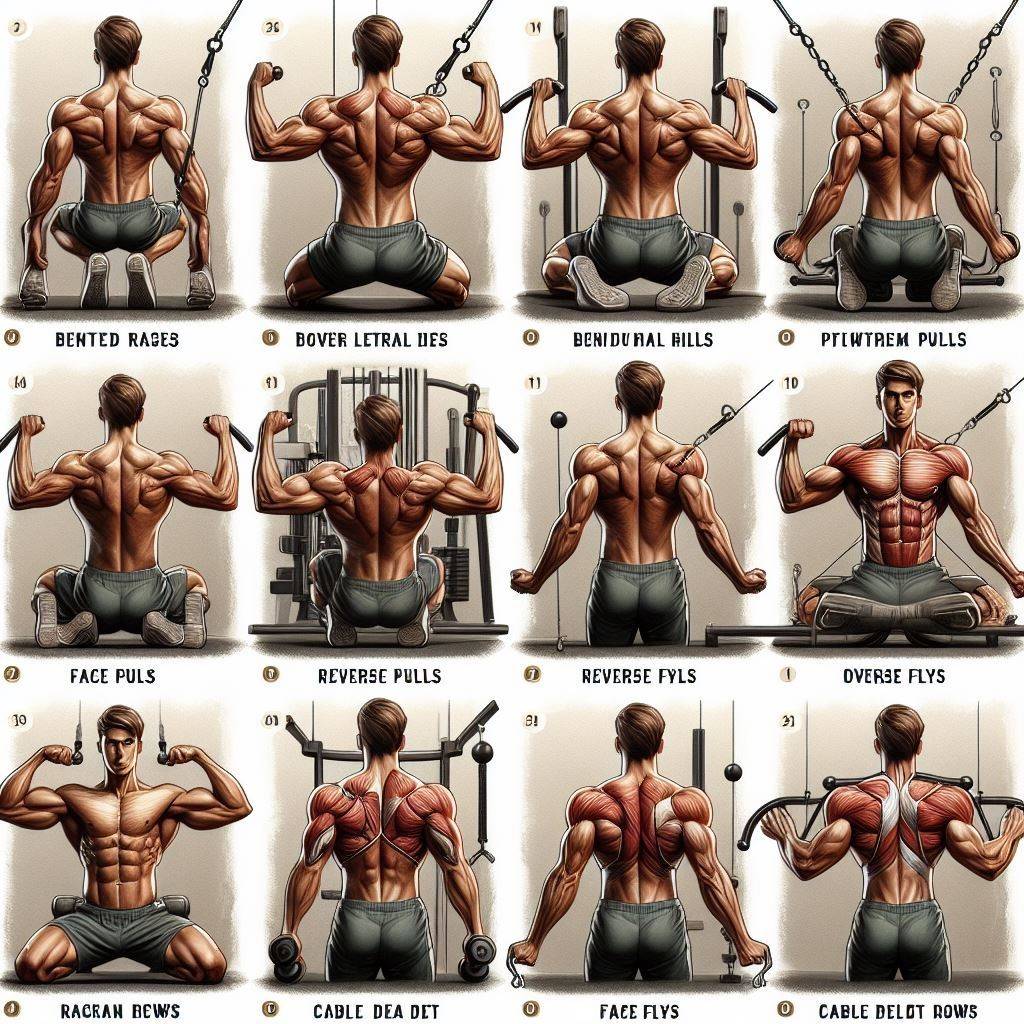
Now, let’s dive into each of these best rear delt exercises in more detail.
1. Face Pulls
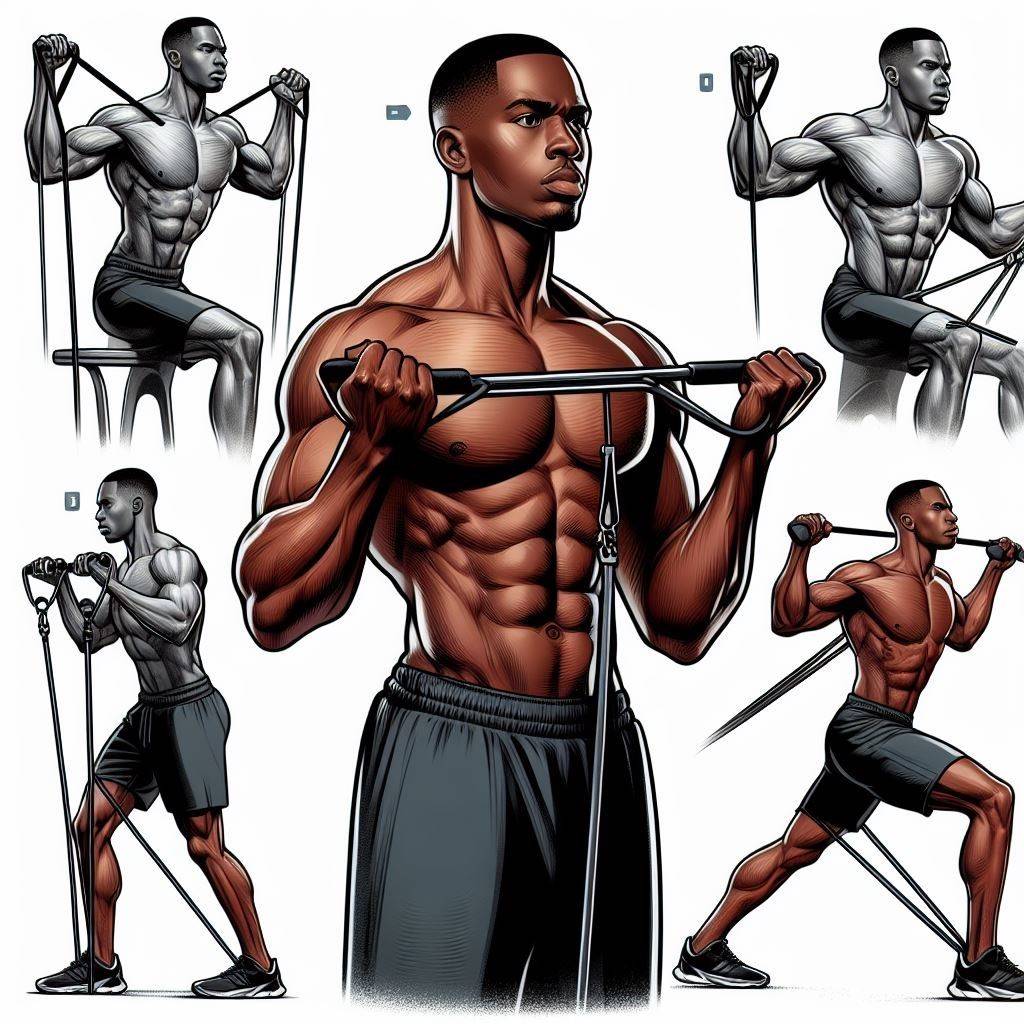
This compound movement efficiently works the rear deltoids while also activating muscles in the upper back. This movement helps improve posture, shoulder health, and overall upper body strength.
To perform face pulls:
- Attach a rope or straight bar to a high pulley cable.
- Grasp the rope or bar using an overhand grip, ensuring your hands are a bit wider than shoulder-width apart.
- Position yourself with your feet at shoulder width, knees slightly flexed, and keep your core activated.
- By integrating the top rear deltoid exercises provided in this manual, you’ll effectively activate and fortify these crucial muscles,
- Take a brief pause before gradually returning to the initial stance, ensuring to refrain from arching your lower back.
2. Bent-Over Reverse Flyes

Bent-over reverse flyers are an isolation exercise that directly targets the rear deltoids. This exercise helps build thickness and definition in the rear delt area, contributing to a well-rounded shoulder appearance.
To perform bent-over reverse flyers:
- Take hold of two dumbbells and position yourself with your feet spaced apart at shoulder width.
- Lean forward at the hips, maintaining a straight back and activating your core muscles.
- Allow the dumbbells to hang vertically from your shoulders, ensuring your palms are facing inward towards each other.
- With your arms extended, lift the dumbbells sideways until they align with your body.
- Pause briefly at the top of the movement, squeezing your rear delts.
- Gradually bring the dumbbells down to the initial position, maintaining control over the motion.
3. Seated Rear Delt Raises
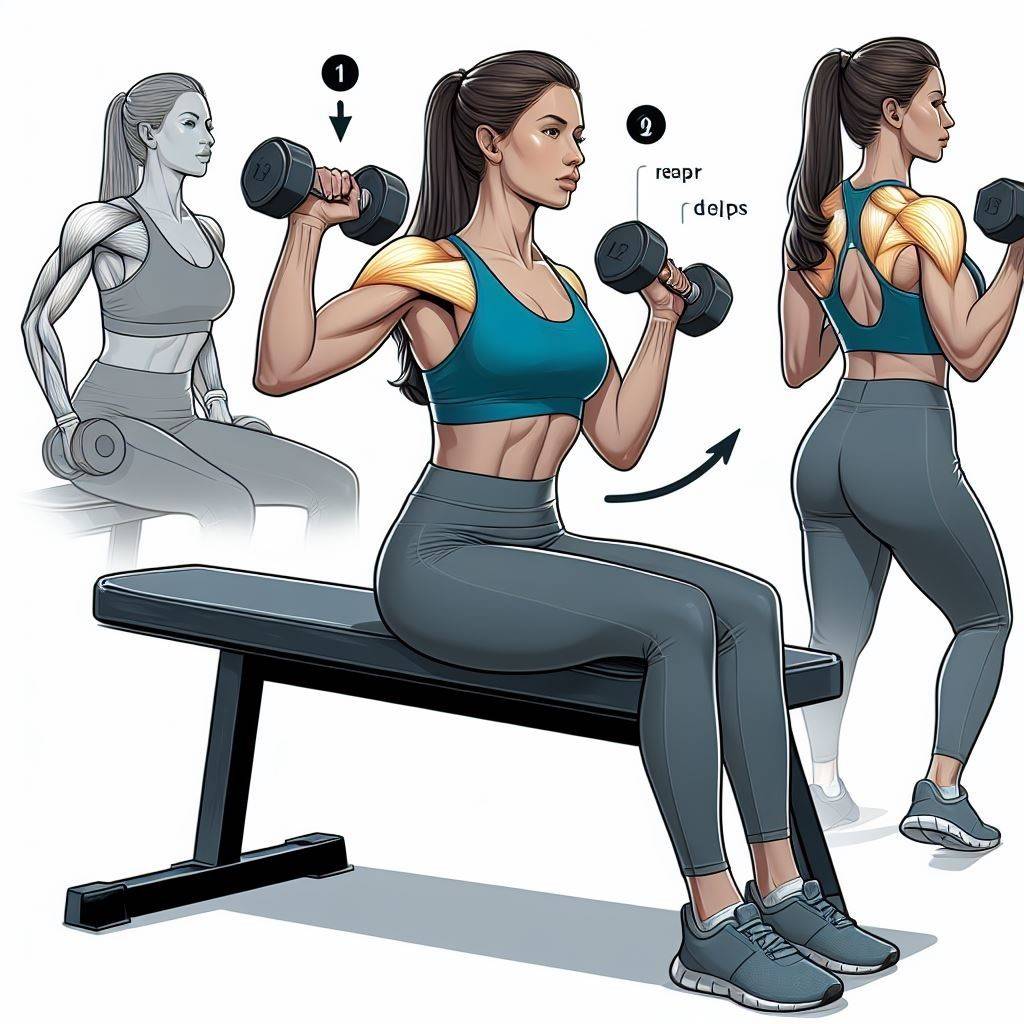
Seated rear delt raises are an effective isolation exercise that allows you to focus solely on the rear deltoids. This exercise minimizes the involvement of other muscle groups, making it an ideal choice for targeting the rear delts directly.
To perform seated rear delt raises:
- Sit on a bench or chair, maintaining an upright posture with your core engaged.
- Grab a pair of dumbbells and hold them with an overhand grip at your sides.
- With your arms extended, elevate the dumbbells sideways until they are level with the floor.
- Pause briefly at the top of the movement, squeezing your rear delts.
- Gradually bring down the dumbbells to their original position while maintaining control over the motion.
4. Reverse Pec Deck Flyes
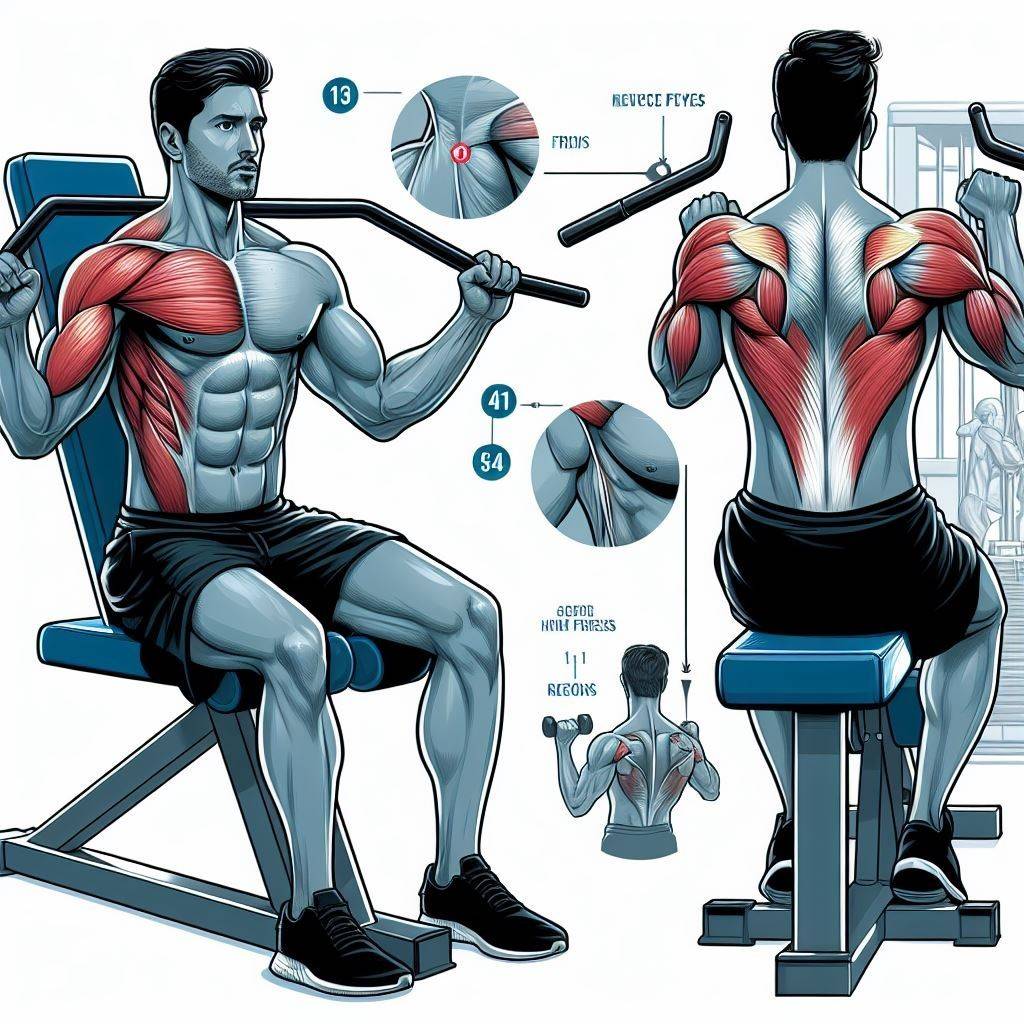
The reverse pec deck fly is a variation of the traditional pec deck flyer but with a focus on targeting the rear deltoids. This exercise provides a unique angle of resistance and can help add thickness and definition to the rear delt area.
For executing reverse pec deck flyers:
- Adjust the pec deck machine to the appropriate height and resistance.
- Sit upright with your chest against the pad and your arms extended in front of you.
- With a slight bend in your arms, extend them outward in an arcing motion, ensuring to contract your rear deltoids after the movement.
- Take a brief pause before gradually moving back to the initial position, ensuring to maintain control throughout the motion.
5. Bent-Over Lateral Raises
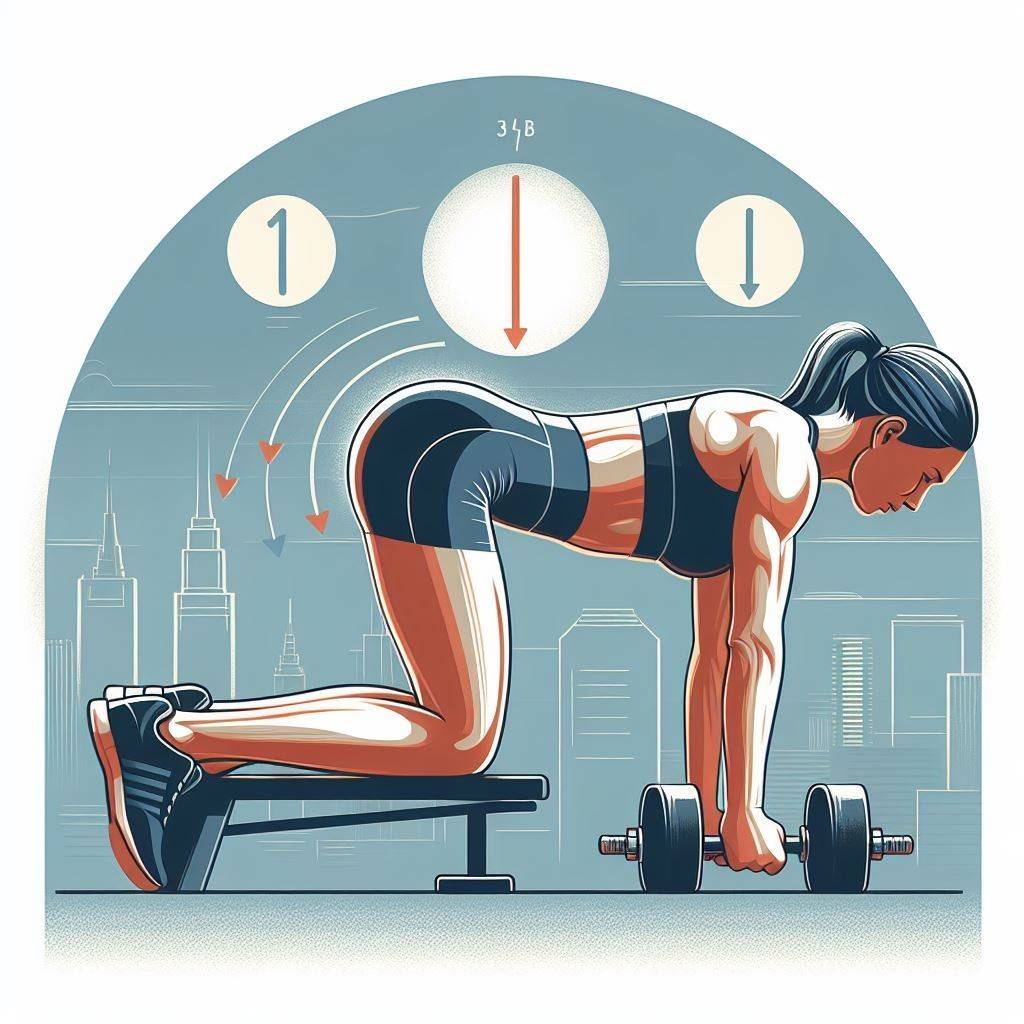
Bent-over lateral raises are a compound exercise that effectively targets the rear deltoids while also engaging the upper back muscles. This exercise helps build overall shoulder strength and definition.
To perform bent-over lateral raises:
- Take hold of two dumbbells and position yourself with your feet spaced apart at shoulder width.
- Bend forward at the waist, ensuring your spine remains in alignment and your core muscles are activated.
- Allow the dumbbells to hang vertically from your shoulders, with your palms oriented towards each other.
- With your arms extended, lift the dumbbells sideways until they reach a position parallel to the ground.
- Pause briefly at the top of the movement, squeezing your rear delts.
- Gradually descend the dumbbells to their initial position while maintaining control over the movement.
6. Reverse Cable Crossovers
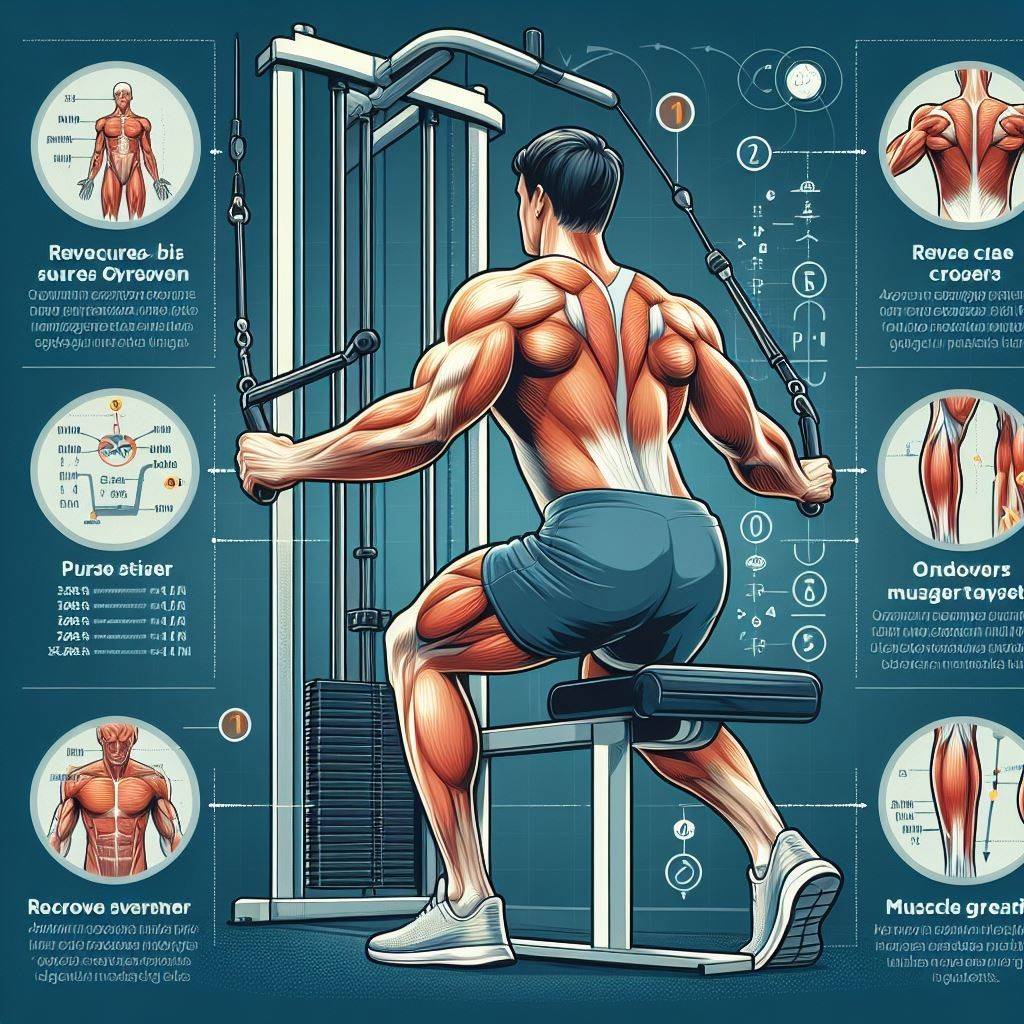
Reverse cable crossovers are a cable-based exercise that effectively targets the rear deltoids while also engaging the back muscles. This exercise provides a unique angle of resistance and can help improve shoulder stability and posture.
To perform reverse cable crossovers:
- Attach D-handles or ropes to the high pulleys of a cable crossover station.
- Stand in the middle of the station, facing the weight stacks.
- Grab the handles with an overhand grip, keeping your arms straight and your palms facing down.
- Step back to create tension in the cables, engaging your core and keeping your posture upright.
- Pull the handles toward your hips, squeezing your rear delts at the end of the movement.
- Pause briefly, then slowly return to the starting position, controlling the movement.
7. Seated Rear Delt Rows
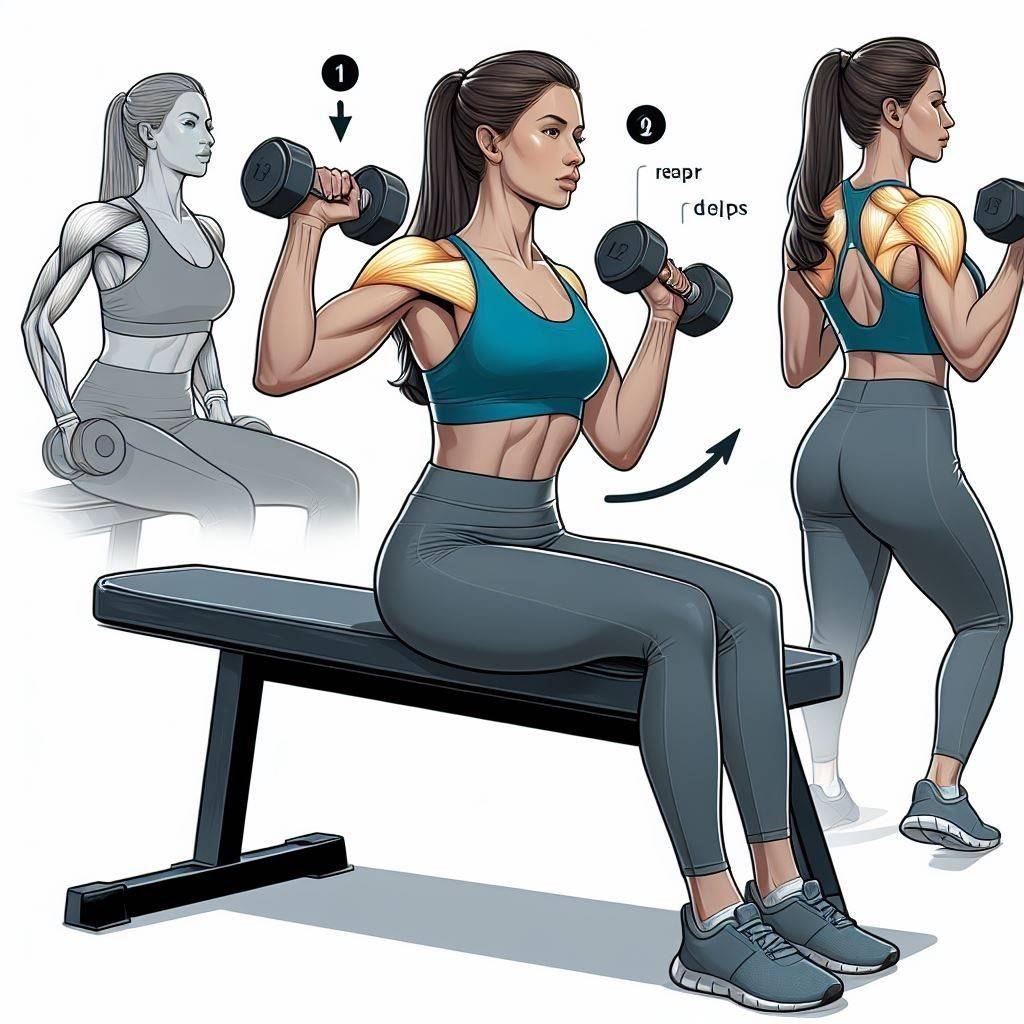
Seated rear delt rows are a compound exercise that effectively targets the rear deltoids while also engaging the back muscles. This exercise helps improve posture, shoulder health, and overall upper body strength.
To perform seated rear delt rows:
- Sit upright on a bench or chair, with your feet planted firmly on the ground.
- Grab a pair of dumbbells and hold them with an overhand grip, arms extended in front of you.
- Keeping your core engaged and your back straight, row the dumbbells toward your lower abdomen, squeezing your rear delts at the end of the movement.
- Pause briefly, then slowly return to the starting position, controlling the movement.
8. Reverse Dumbbell Flyes
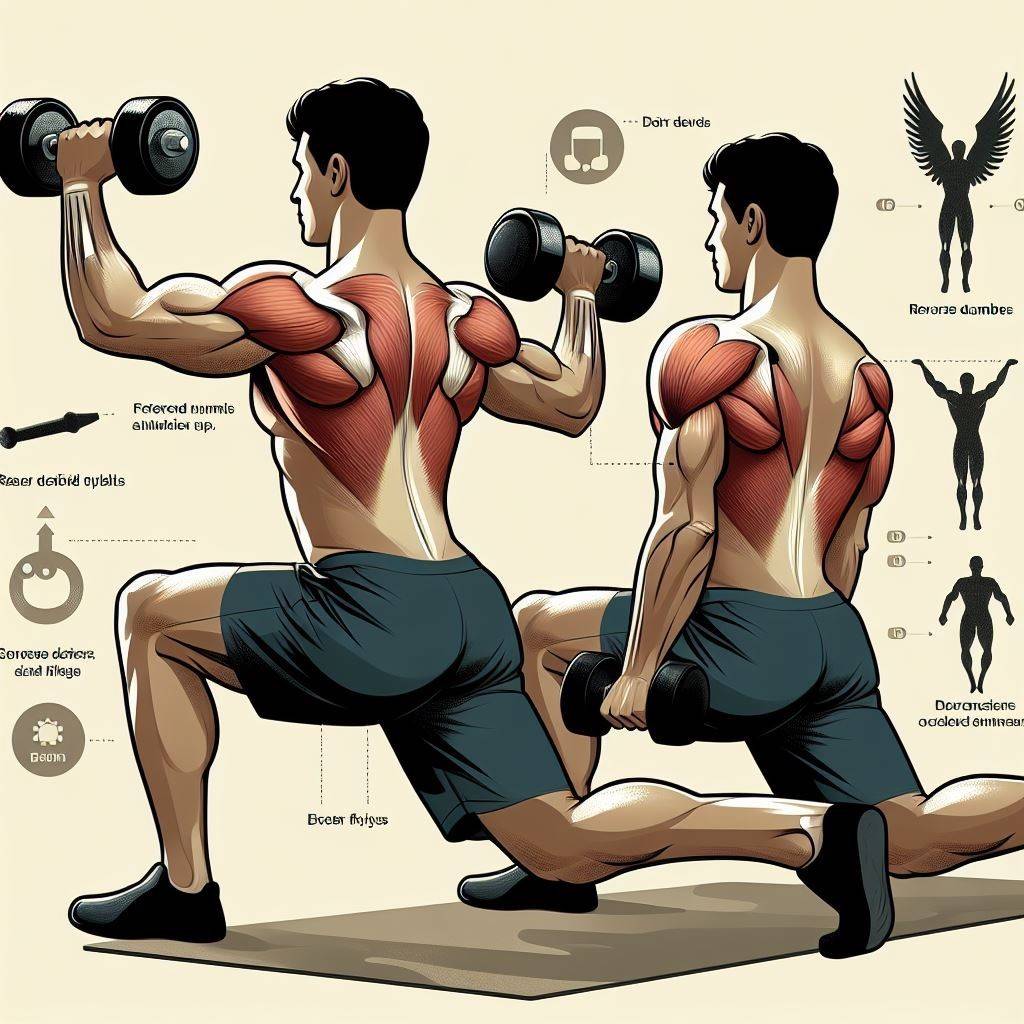
Reverse dumbbell flyes are an isolation exercise that directly targets the rear deltoids. This exercise helps build thickness and definition in the rear delt area, contributing to a well-rounded shoulder appearance.
To perform reverse dumbbell flyes:
- Hold onto two dumbbells and stand with your feet spaced apart at shoulder width.
- Lean forward from the hips while ensuring your spine remains aligned and your core muscles are activated.
- Allow the dumbbells to dangle vertically from your shoulders, with your palms oriented toward each other.
- Lift the dumbbells sideways, ensuring your arms remain fully extended until they align with your body.
- Pause briefly at the top of the movement, squeezing your rear delts.
- Gradually bring down the dumbbells to their initial position, maintaining control over the movement.
9. Bent-Over Reverse Dumbbell Raises
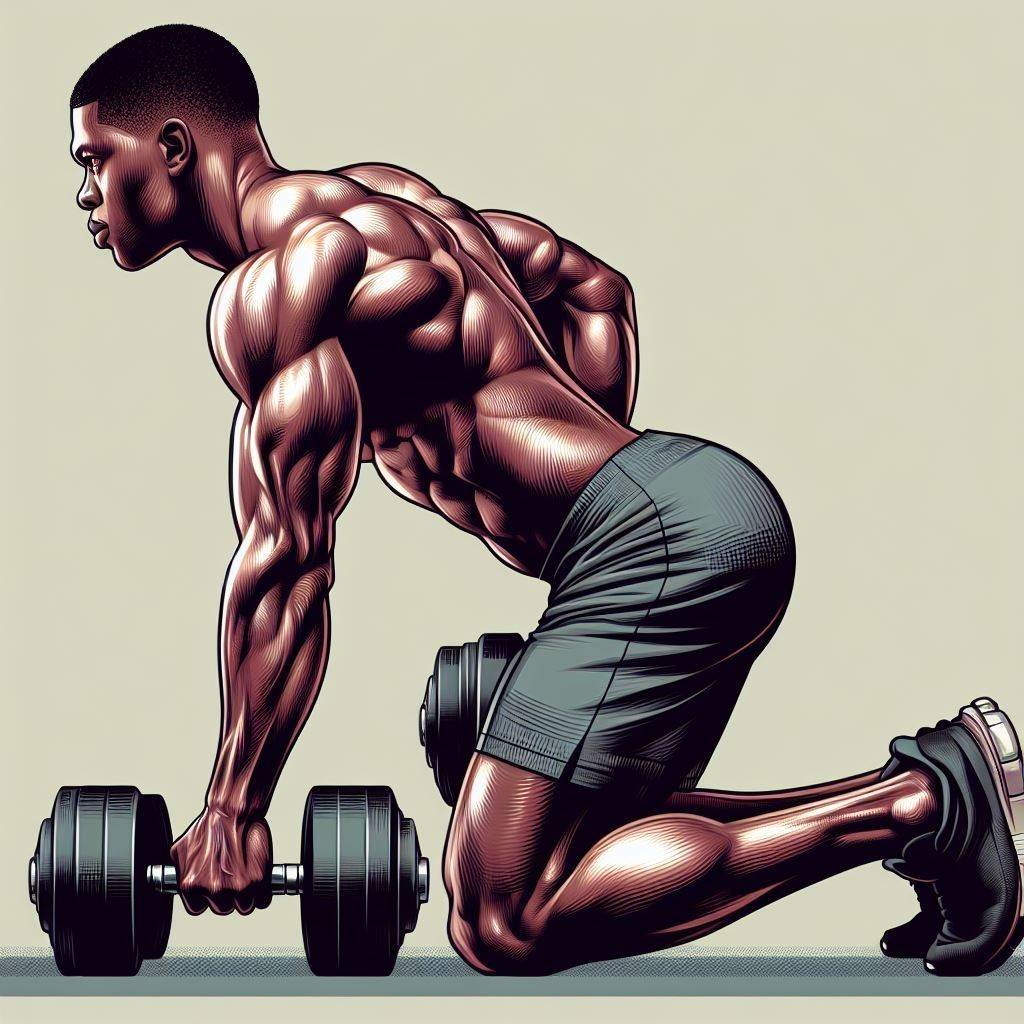
Bent-over reverse dumbbell raises are a variation of the traditional bent-over lateral raise but with a focus on targeting the rear deltoids. This exercise provides a unique angle of resistance and can help add thickness and definition to the rear delt area.
To perform bent-over reverse dumbbell raises:
- Hold onto two dumbbells and stand with your feet spaced apart at shoulder width.
- Lean forward from the hips while ensuring your back remains upright and your core muscles are activated.
- Allow the dumbbells to dangle directly beneath your shoulders, with your palms oriented toward each other.
- While maintaining straight arms, lift the dumbbells outward and slightly backward, focusing on engaging your rear deltoids as you reach the end of the motion. Pause briefly, then slowly lower the dumbbells back to the starting position, controlling the movement.
10. Perform Band Pull-Apart
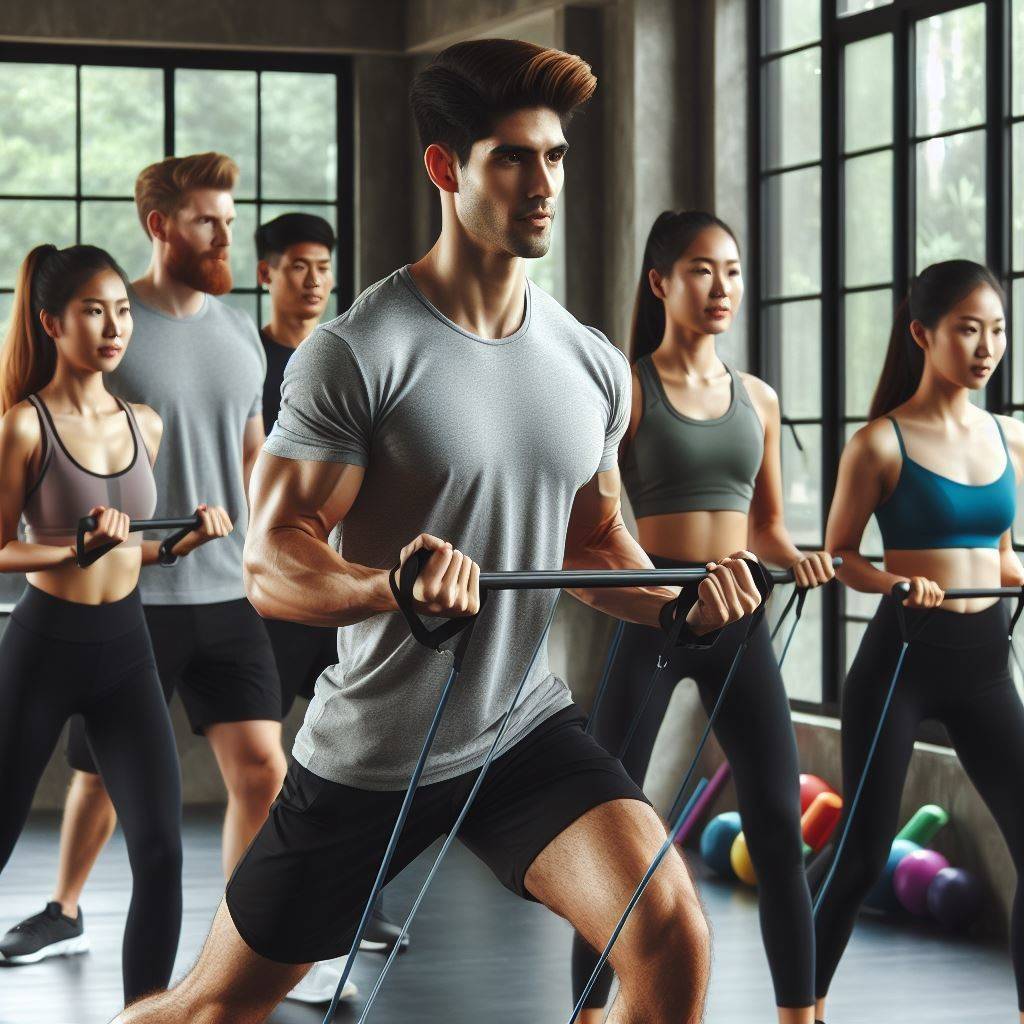
It is a simple yet effective exercise that targets the rear deltoids while also engaging the upper back muscles. This exercise helps improve posture, shoulder health, and overall upper body strength.
To perform band pull-parts:
- Take hold of a resistance band using an overhand grip, ensuring your hands are slightly wider than shoulder-width apart.
- Position yourself with your feet separated at a shoulder-width distance, knees slightly flexed, and core activated.
- Stretch the band, ensuring to contract your shoulder blades together as you complete the motion.
- Briefly halt, then gradually revert to the initial position while maintaining control of the movement.
Incorporating Best Rear Delt Exercises into Your Routine
Now that you’re familiar with the best rear delt exercises, it’s time to incorporate them into your routine. Here are a few tips to help you maximize your results:
- Prioritize Compound Movements: Start your routine with compound exercises like face pulls, bent-over lateral raises, and seated rear delt rows. These movements engage multiple muscle groups and provide a solid foundation for your rear delt development.
- Focus on Isolation Exercises: Follow up with isolation exercises like seated rear delt raises, reverse pec deck flyers, and reverse dumbbell flyers. These exercises allow you to fully concentrate on targeting the rear deltoids without the involvement of other major muscle groups.
- Utilize Progressive Overload: To continue making progress and stimulating muscle growth, gradually increase the weight, reps, or intensity of your best rear delt exercises over time. This progressive overload is essential for challenging your muscles and promoting further development.
- Incorporate Variety: While it’s important to stick to the best rear delt exercises, don’t be afraid to introduce variations or swap out exercises occasionally. This variety can help prevent plateaus and keep your muscles guessing, leading to continued progress.
- Allow for Proper Recovery: Adequate rest and recovery are crucial for muscle growth and repair. Aim to train your rear delts once or twice a week, allowing at least 48 hours of rest between sessions targeting the same muscle group.
By adhering to these instructions and regularly adding the most effective rear deltoid workouts to your regimen, you’ll be well on your way to achieving impressive shoulder development and unlocking your true potential.
Conclusion
For many fitness enthusiasts, balanced shoulders are a common goal. To achieve this, it’s crucial to focus on the often-overlooked rear deltoids. By incorporating the Best Rear Delt Exercises outlined here, you’ll strengthen these muscles and enhance your shoulder development significantly.
Remember, consistency and proper form are key to maximizing the benefits of these exercises. Don’t be afraid to challenge yourself by gradually increasing the weight or intensity, and always prioritize compound movements before moving on to isolation exercises.
Stay dedicated, stay motivated, and keep pushing forward. With the right approach and mindset, you’ll be well on your way to unlocking your shoulder potential and achieving the impressive physique you’ve always desired.



